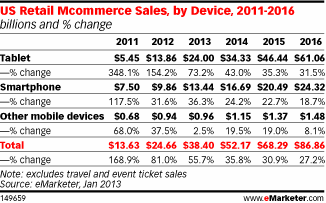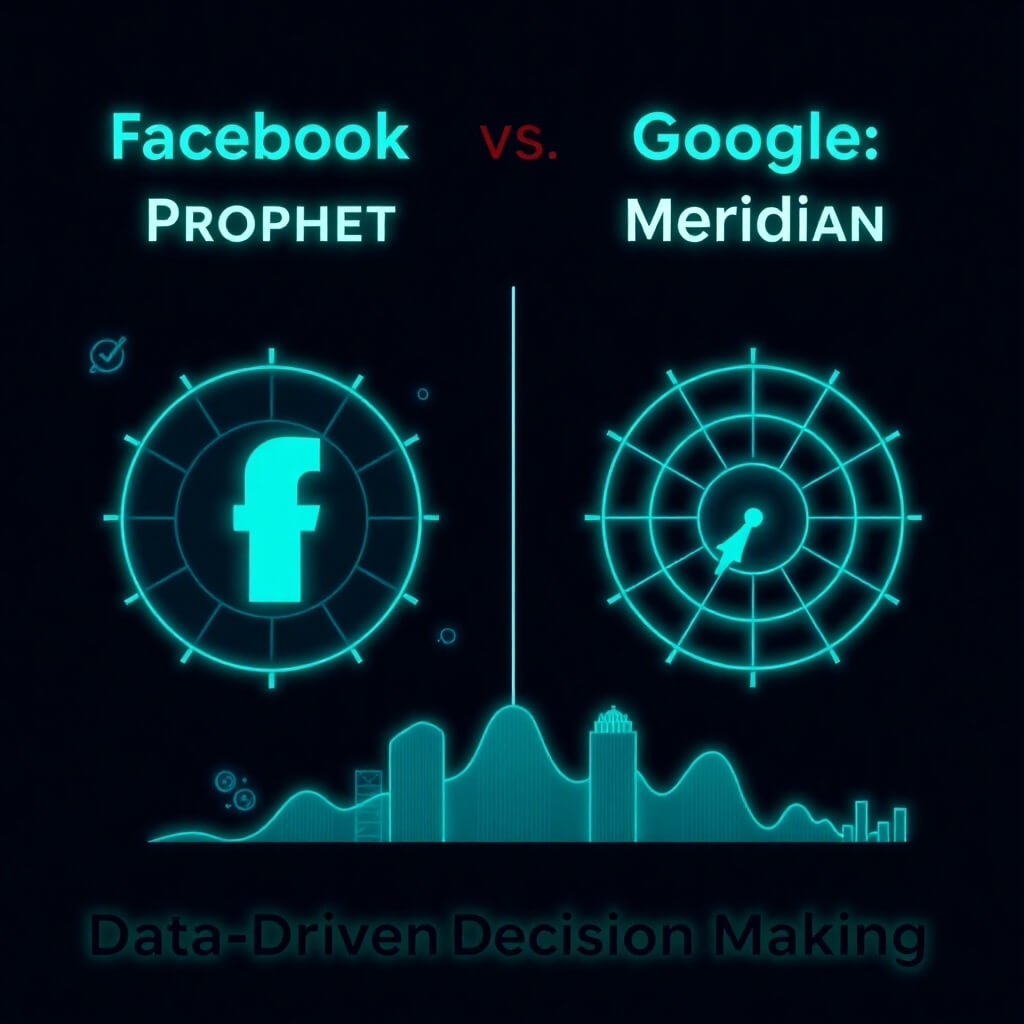As digital marketers, we naturally spend more time thinking about online sales – sales that can be tied back to our programs – than brick and mortar sales. However it is important to take a step back from our day to day and look at how brick and mortar retailers are reacting and adapting to ecommerce and how we are reacting to them. We are both pieces of a bigger picture, and it is too easy to forget that. 2012 was an interesting year for ecommerce, particularly in the proliferation of mobile ecommerce and price comparison apps.
Although the adoption of mobile optimized sites was slow at first, more brand are realizing the importance of creating mobile friendly environments for their consumers. Now, with revenue numbers from 2012 rolling in, it is obvious that mobile is not only popular, but is poised to become a dominant player in 2013. Mobile ecommerce increased 81% from 2011 to 2012 with $25 billion, or 11%, of total ecommerce revenue coming from mobile (BizReport.com). In 2013 consumers are expected to spend over $1.25 trillion dollars online globally according to InternetRetailer.com and an increasing percentage of that will come from mobile.
Without the ability to ‘showroom’ products brick and mortar stores have been seeing a decline for years, and as of 2012 ecommerce accounts for a total of 5.20% of retail sales in the US (ycharts.com). Or worse for these retailers, consumers use brick and mortar locations for the showroom and then purchase the product online for a better price. While digital marketers are thriving with the rise of mobile ecommerce and price compare apps like Price Grabber or Amazon’s Price Check, brick and mortar stores are losing more and more market share. Consumers are attracted to the convenience of a few clicks, the lure of free shipping, and the guarantee of the lowest price.
It is up to brick and mortar retailers to decide how to adapt their brand to accommodate consumers moving to mobile ecommerce and to price comparison apps in droves. Brands who have a true understanding of their consumer will handle without any problem, but those who do not are sure to take a few missteps in the coming years. Best Buy, for example, has replaced standard bar codes with Best Buy only bar codes so customers cannot scan and price compare online (NYTimes.com). This only makes it more difficult for customers to get the information they seek (and will still find eventually); it is not making Best Buy any more of a trusted or valued brand to their consumers.
There are other mega retailers such as Walmart and Sears that are utilizing a much deeper understanding of today’s consumer. Instead of digging their heels in when consumers began moving to online and mobile ecommerce, they are accommodating that experience in store. Web return centers and pick up locations are becoming commonplace in stores across the country, and retailers like Walmart and the Container Store are now featuring pickup locations for online orders. Walmart is even allowing customers to order products online and pay in cash when they come to the store to pick up their order (NYTimes.com). Instead of frustrating customers by eliminating options; these retailers are embracing ecommerce and altering their brick and mortar locations to become extensions to their online store.
This behavioral shift is not limited to electronic and home goods stores either; grocery stores are seeing their consumers’ behavior change in recent years as well. A 2012 Nielsen survey found 26% of their sample intended to purchase groceries online within the next three to six months globally. In the US alone there is a forecasted 9.5% growth in the online grocery category according to JWT Intelligence’s 100 Trends for 2013 report.
If the customer used to be the king, then today the customer has been elevated to ruler by divine right. With hyper-personalization now the norm, consumers expect their interactions with brands to be tailored to their specific needs. And if a brand fails to live up to that expectation, the consumer will simply go elsewhere. Best Buy won’t let you scan a bar code into a price comparison app? Fine, go to Radio Shack. There is no shortage for competition in a market where seemingly every category is saturated.







